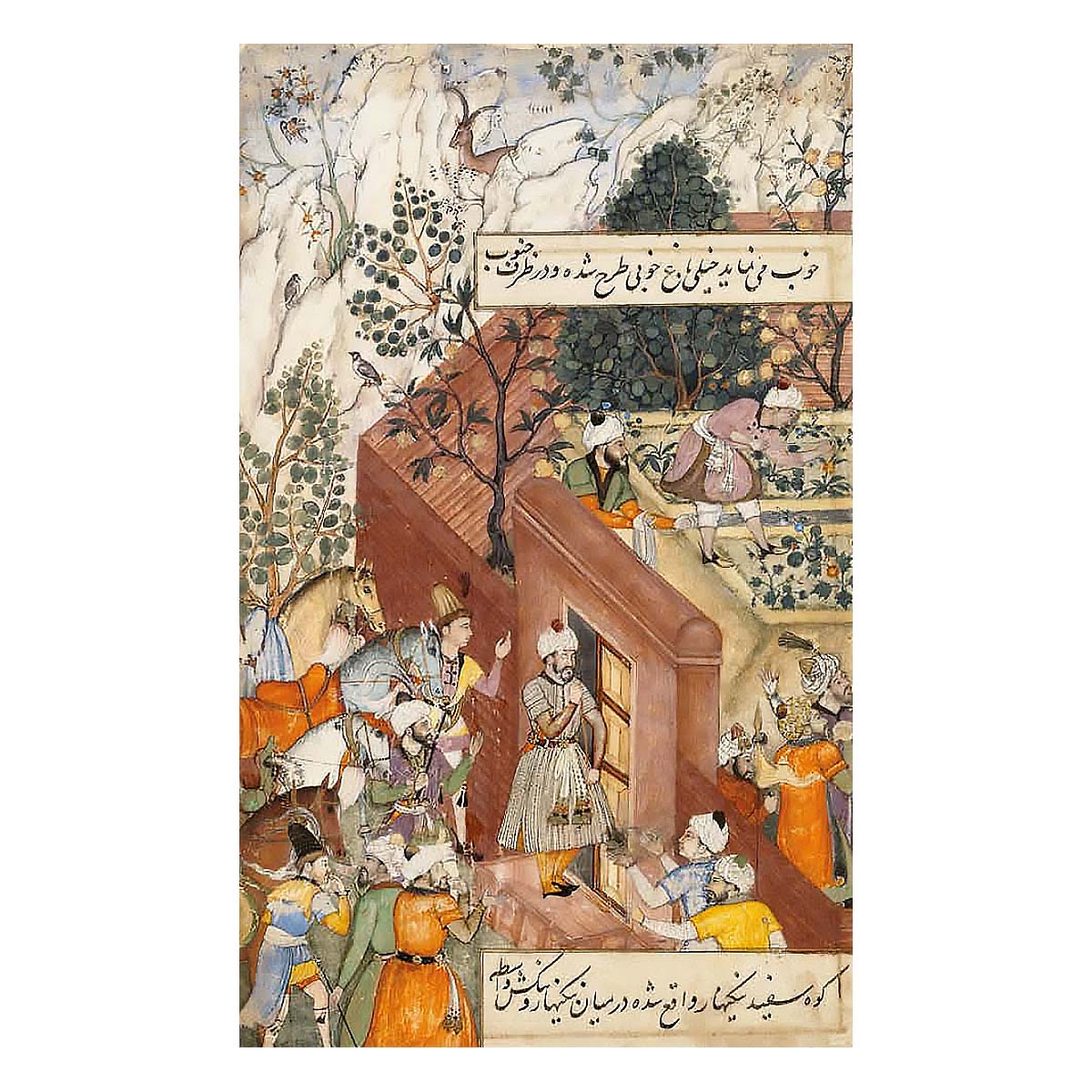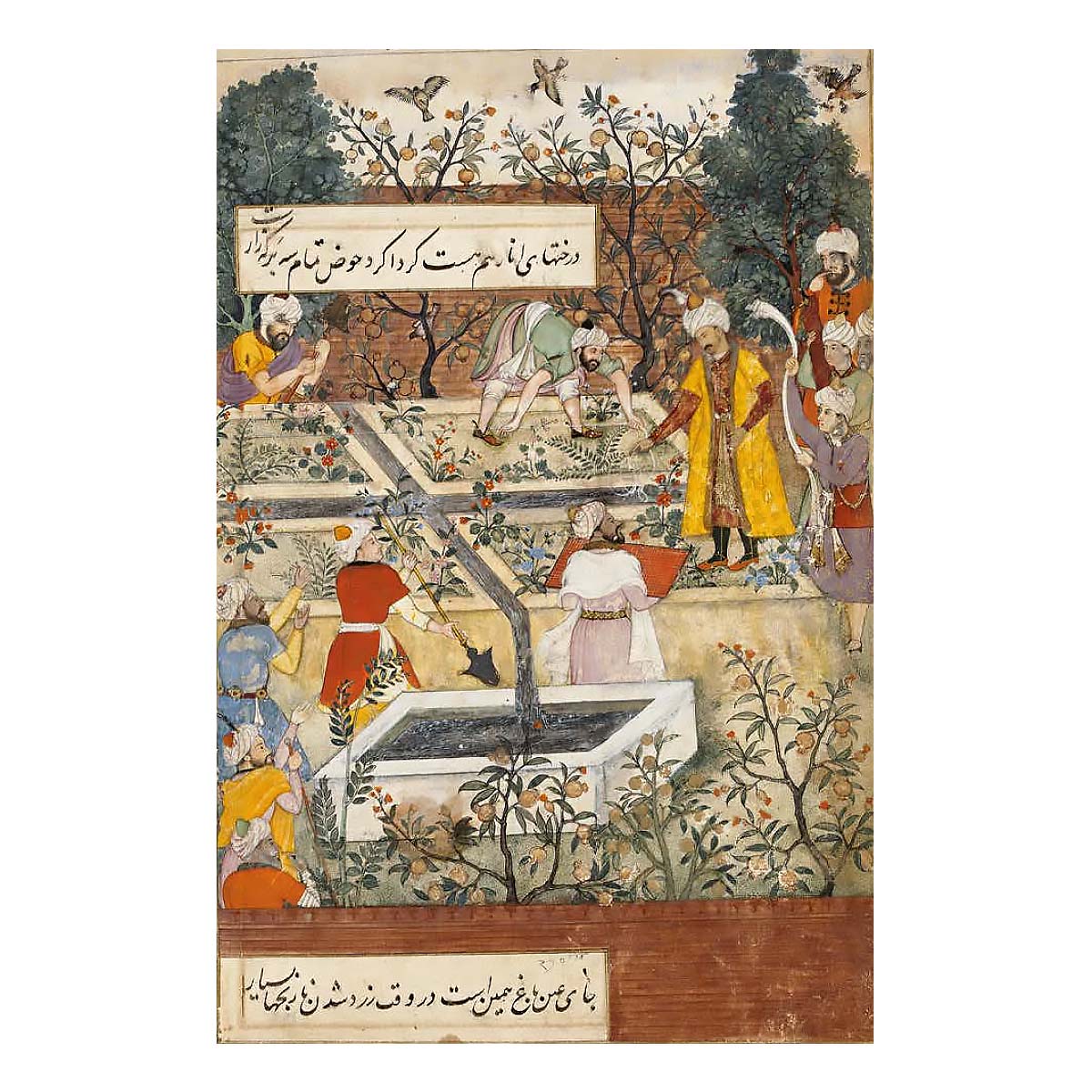PERSPECTIVES
What Can the Construction of Gardens Reveal to us About Imperial Motives?
A folio from the Baburnama (The Book of Babur), featuring the Mughal emperor overseeing the making of the Bagh-e Vafa (The Garden of Fidelity), the first of many gardens that Babur built in South Asia, make up the composition referred to as Babur’s Timurid Garden. Emulating the Persian Chahar Bagh, also Charbagh, (four gardens) a layout formalised by the Turko-Mongol emperor Timur, these spaces simulated the Quranic idea of paradise.
While steeped in religious symbolism, the gardens also served two distinct more immediate purposes. First, they relieved the emperor of his nostalgia for the Central Asian terrains he was familiar with and addressed his distaste for the “untidy” landscapes in his new territories. The gentle streams and ample shade conjured a multi-sensorial experience in these spaces of repose. The provision of fruits such as bananas, lime, pomegranates, oranges and sugarcane satisfied his epicurean lifestyle. Second, they reinforced Babur’s right to rule by drawing attention to his power over the elements. By channelling water and successfully naturalising non-native species of flowering plants and fruit trees, he demonstrated control over topographies and their people. Pruned to geometric precision in their symmetry and order, such gardens portrayed his ability to tame a force as great as nature.
Although Babur’s gardens might instantly be revered for their design, agricultural prowess and symbolism, these seemingly innocuous spaces went beyond simply serving the eyes of the beholder or providing respite. They contributed robustly towards cementing an image of the emperor as a wealthy and powerful figure, legitimising his reign. Babur’s successors continued, in a similar vein, to build such spaces across Delhi, Agra, Lahore and Kashmir. These are recognised today as Mughal Gardens.






